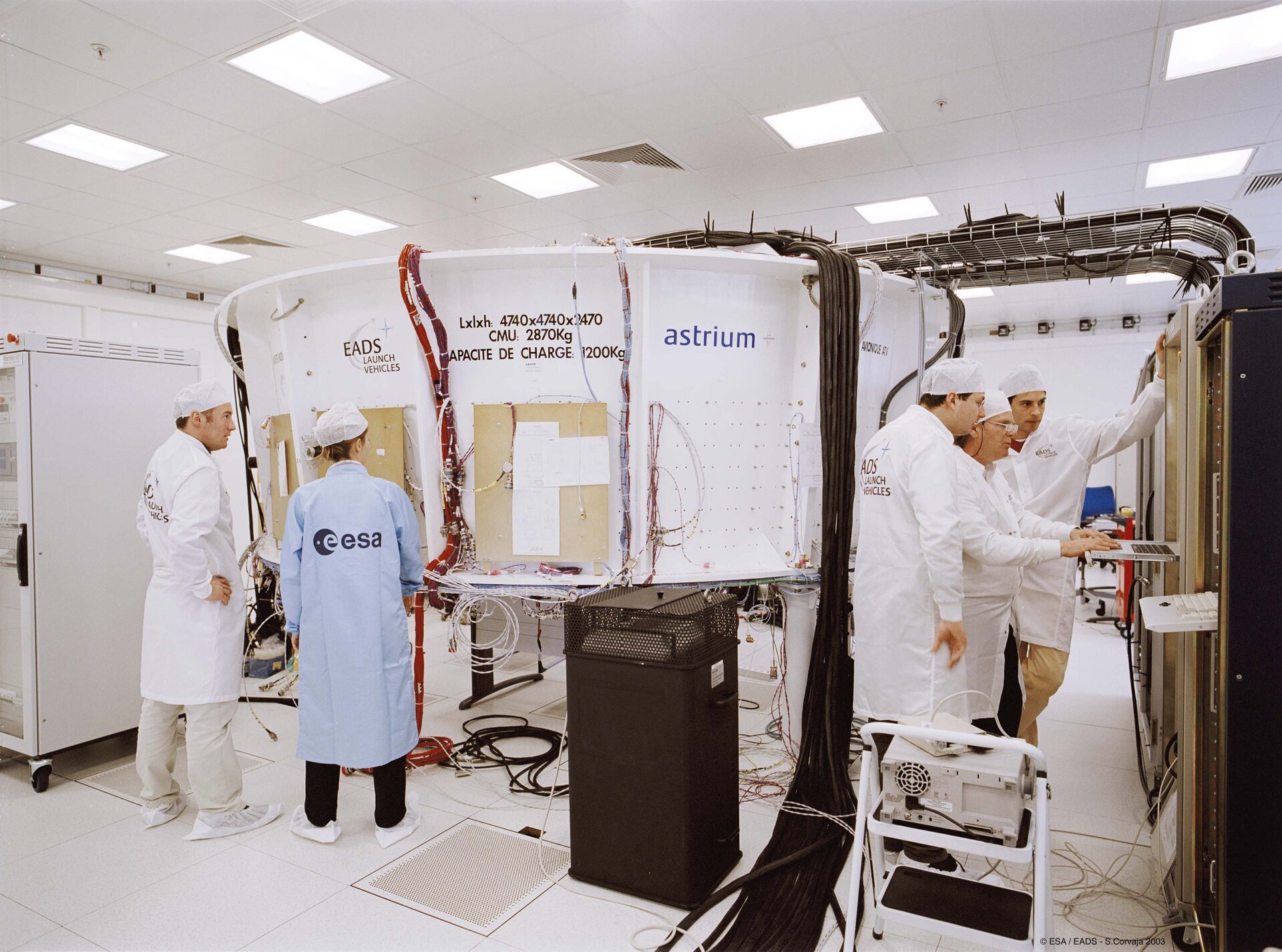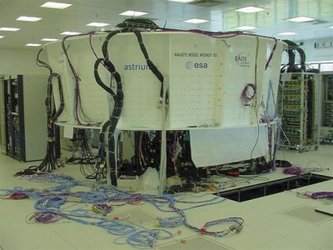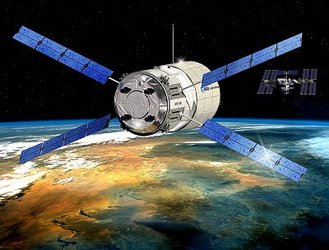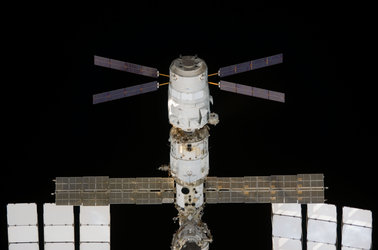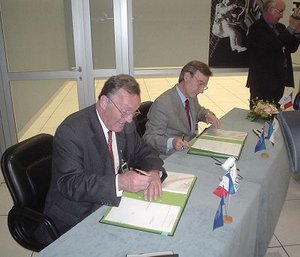ATV simulation facility will be first to 'fly' very complex mission
Before the green light can be given for the launch of Jules Vernes in 2007, another Automated Transfer Vehicle (ATV) has to first successfully fly the same mission.
Next year, prior to the inaugural ATV mission, this ATV will fly a full mission through launch, docking and undocking from ISS, to controlled destructive re-entry over the Pacific.
Although this ATV, which has been progressively assembled since late 2002, will never go into space, or dock with ISS, or safely burn up during re-entry. In fact, it will never move from its clean, air-conditioned room at EADS SPACE Transportation’s facilities (ex-EADS-LV) in Les Mureaux, 50 km west of Paris, France. Instead, it will be capable of simulating dozens of missions and it will run hundreds of tests, including virtual failure scenarios.
The ATV mock-up does not even look like a full spacecraft; it is essentially the electronic 'brain' and the 'nervous system' of the ATV with numerous electronic boxes, powerful computers and huge networks of cables and wires. It is called the Electrical Test Model (ETM), and it is able to replicate all the complexity of the avionics and the onboard electronics of the ATV.
The Electrical Test Model is built into a large cylindrical structure, 4.8 m diameter and 1.36 m in height. In the ATV flight model, the avionics bay segment appears as a similar cylindrical white skirt between the two other main modules of the ATV, the propulsion bay and the pressurized integrated cargo carrier.
Simulation of mission scenarios

To simulate all the phases of the mission, the Electrical Test Model is at the heart of an even larger piece of ground equipment, the Functional Simulation Facility (FSF), which includes up to 50 electronics racks. Through hundreds of cables and umbilicals, dozens of ground computers, controlled by some 50 engineers, are able to replicate the functional environment of the navigation and flight dynamics during all possible nominal and off-nominal scenarios of the spaceship.
In addition, key elements of the real flight hardware, like, for example, the GPS or the rendezvous videometre - which enables laser-guided rendezvous operations in orbit - will be inserted in the Functional Simulation Facility for dedicated tests. These hardware elements can be compared to the navigation 'senses' of the ATV mock-up, connected - through 'nervous system' like cables - to the electronic 'brain'. Thanks to this complex infrastructure, with its interconnecting flight hardware, powerful computers and numerous pieces of software, it is as if the avionics bay Electrical Test Model is actually flying in orbit.
Three types of ATV simulation test
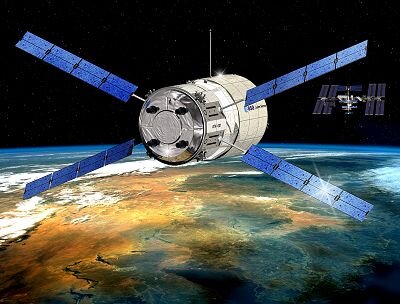
The Functional Simulation Facility is also able to simulate the behaviour of onboard equipment and to check their performance during all flight phases. The Functional Simulation Facility also enables switching between software and hardware models. One of the key elements of the Functional Simulation Facility is the Numerical Simulator whose powerful calculator is able to electronically introduce hardware or software failures.
This state-of-the-art simulator allows three kinds of critical tests:
Electrical tests to check the compatibility of all of the ATV components, subsystems and interfaces,
Functional tests to control the response of the hardware, including several flight hardware systems, to the ATV Flight Application Software (FAS) inputs,
- Full “close-loop” mission tests, which are expected to run fully next spring 2004, with all the hardware, the full and final version of the flight software (FAS) and all the means to simulate the navigation: from virtual jet firings to simulated spacecraft movements, providing calculated stimulation to all navigations sensors like, for example, the star tracker or the accelerometer.
Simulation facility nearing completion
"At this stage of the simulator test campaign, about 90% of all the equipment of the Functional Simulation Facility and Electrical Test Model is assembled and integrated. A few elements, like the Russian Equipment Control System (RECS), are yet to be delivered", said Nicolas Bouge, coordinator of ATV qualification tests at EADS SPACE Transportation.
Built by RSC Energia, near Moscow, the RECS will be located in the Cargo Carrier segment of the ATV. The RECS controls all the mechanical Russian docking systems during rendezvous, as well as the refuelling operations during the attached phase. It is also the electrical interface with the International Space Station, allowing power transfer from the Station to the ATV if needed.
The Functional Simulation Facility will also be permanently equipped with a full scale copy of the Russian ATV docking mechanism which has to be integrated and tested in the facility. Arrival of the Russian Docking System (RDS) mock-up is expected by mid-November.


